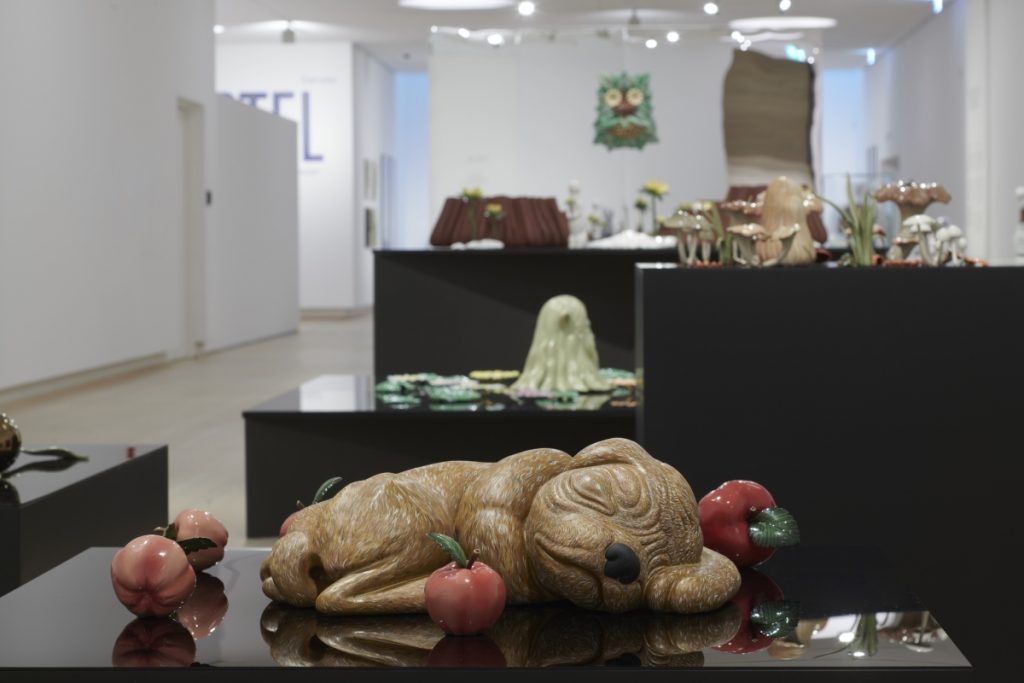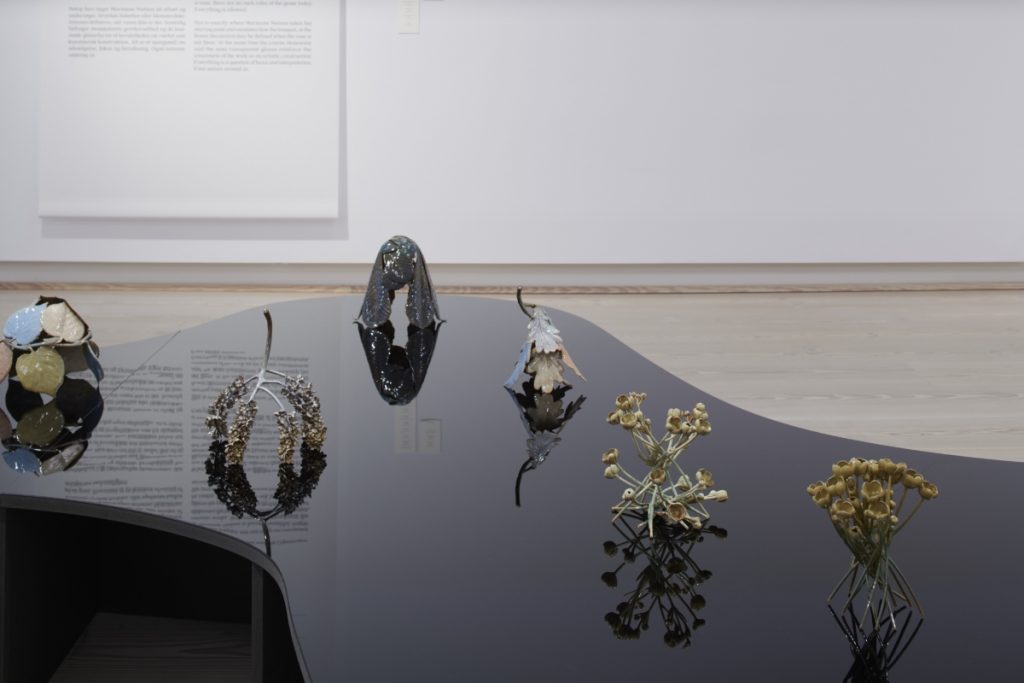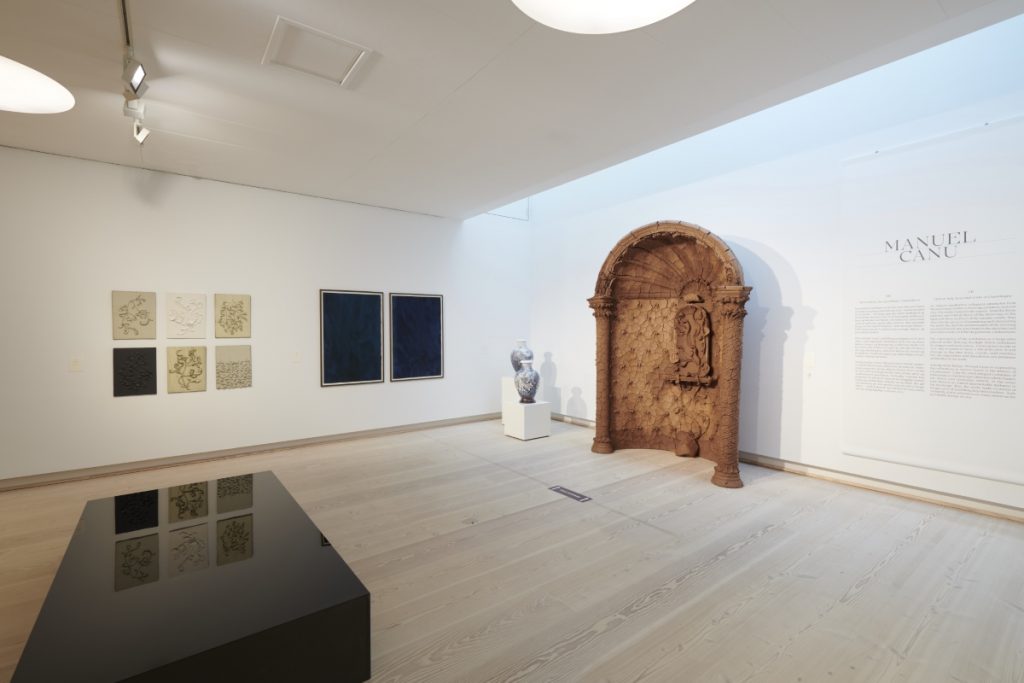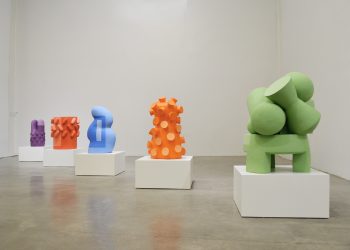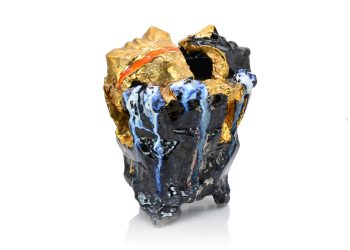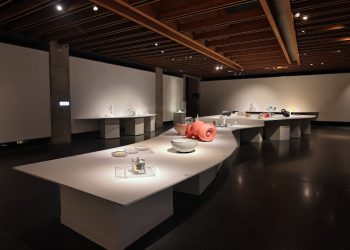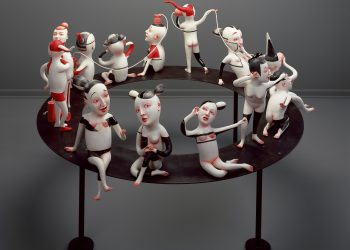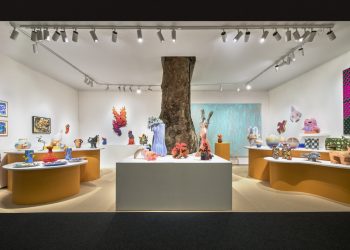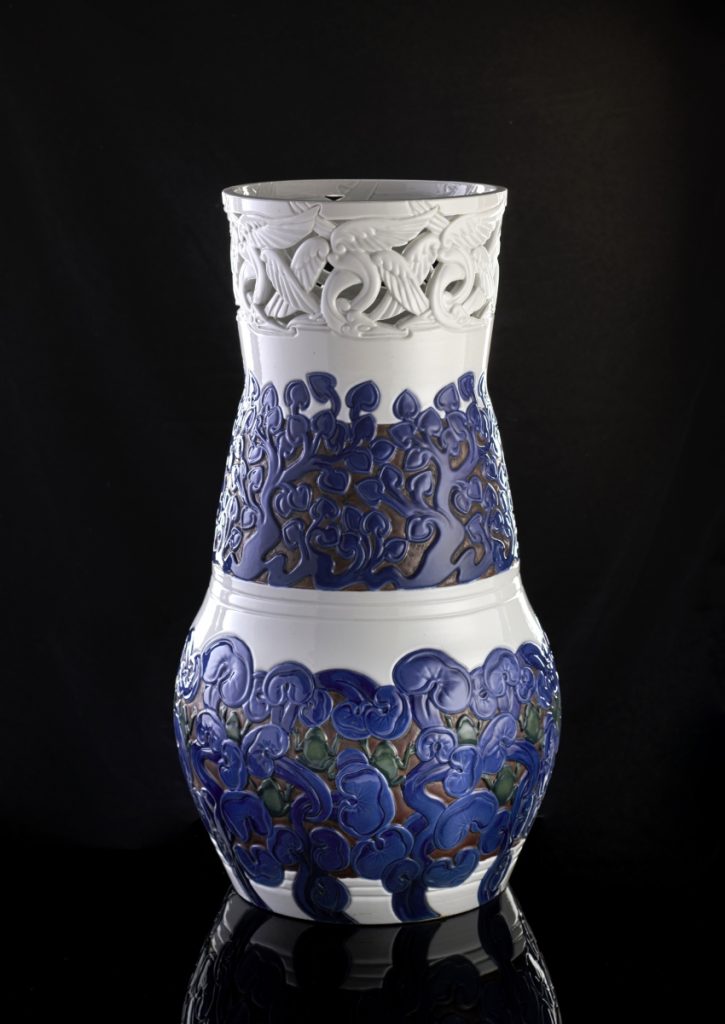
Effie Hegermann-Lindencrone, Vase with frogbit, 1898. Porcelain, 66 x 35 cm, CLAY, The Royal Copenhagen Collection 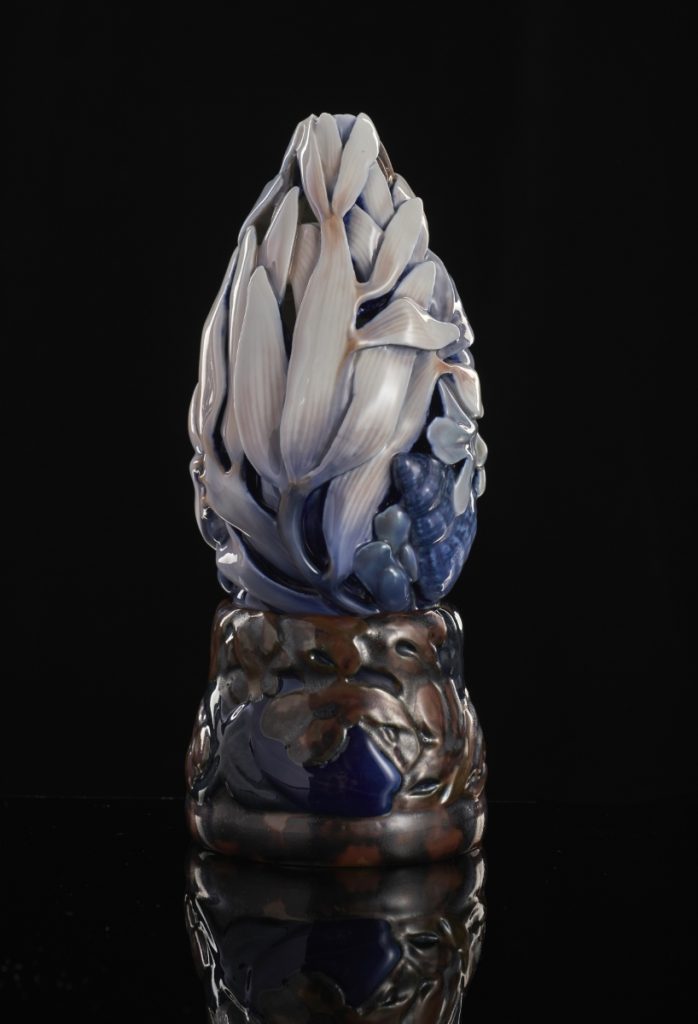
Fanny Garde & Effie Hegermann-Lindencrone, Vase with seewead, 1918. Porcelain, 22.5 x 10 cm, CLAY, The Royal Copenhagen Collection 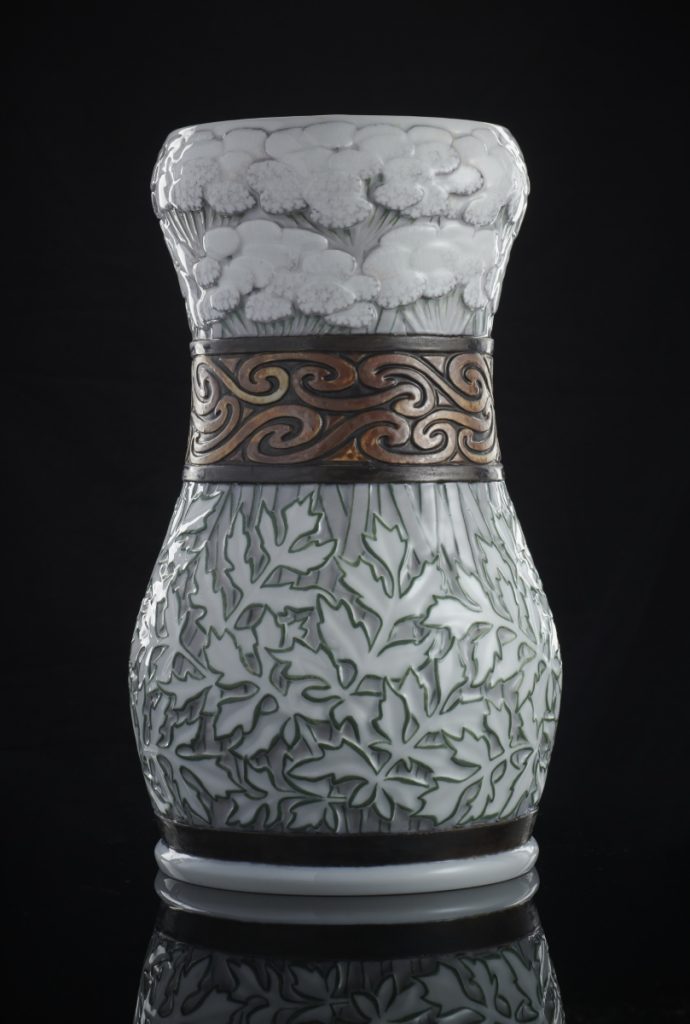
Fanny Garde, Vase with umbellifers, 1898. Porcelain, 43.7 x 26.1 cm, CLAY, The Royal Copenhagen Collection 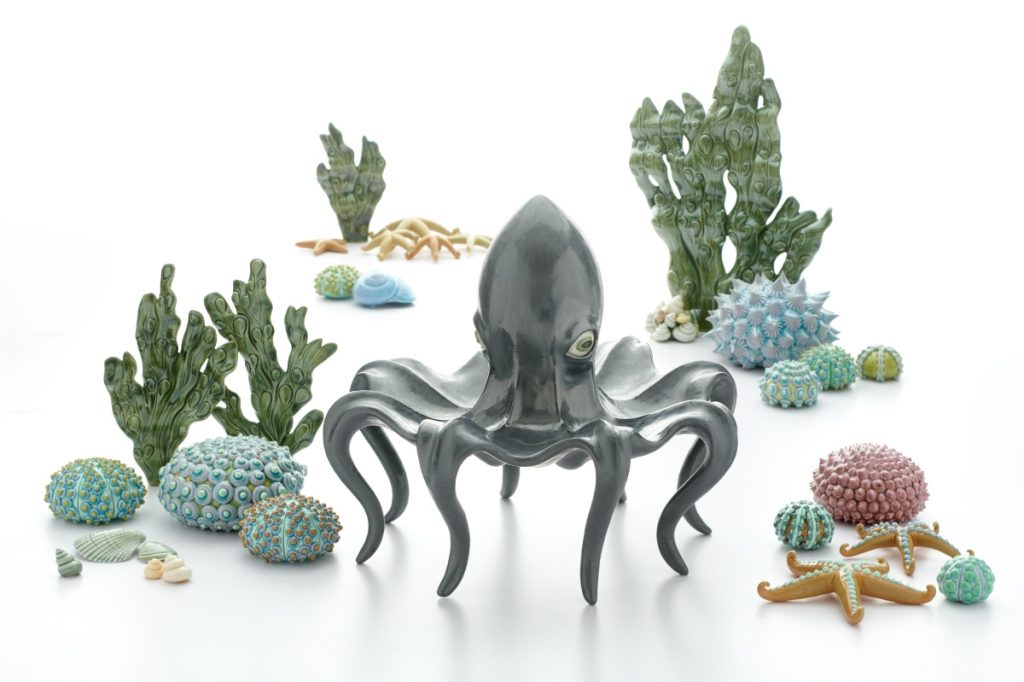
Malene Hartmann Rasmussen, Sea, 2020, Stoneware and earthenware, Octopus: 31 x 37 x 37 cm 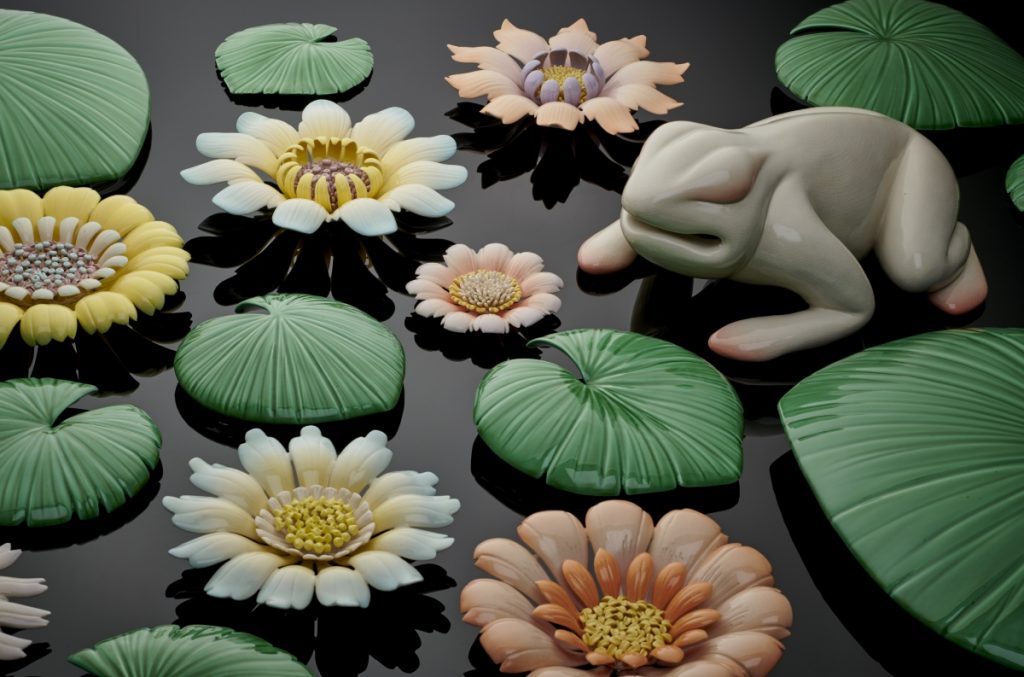
Malene Hartmann Rasmussen, The Lake, 2017-2021, Earthenware, Frog: 12 x 24 x 29 cm 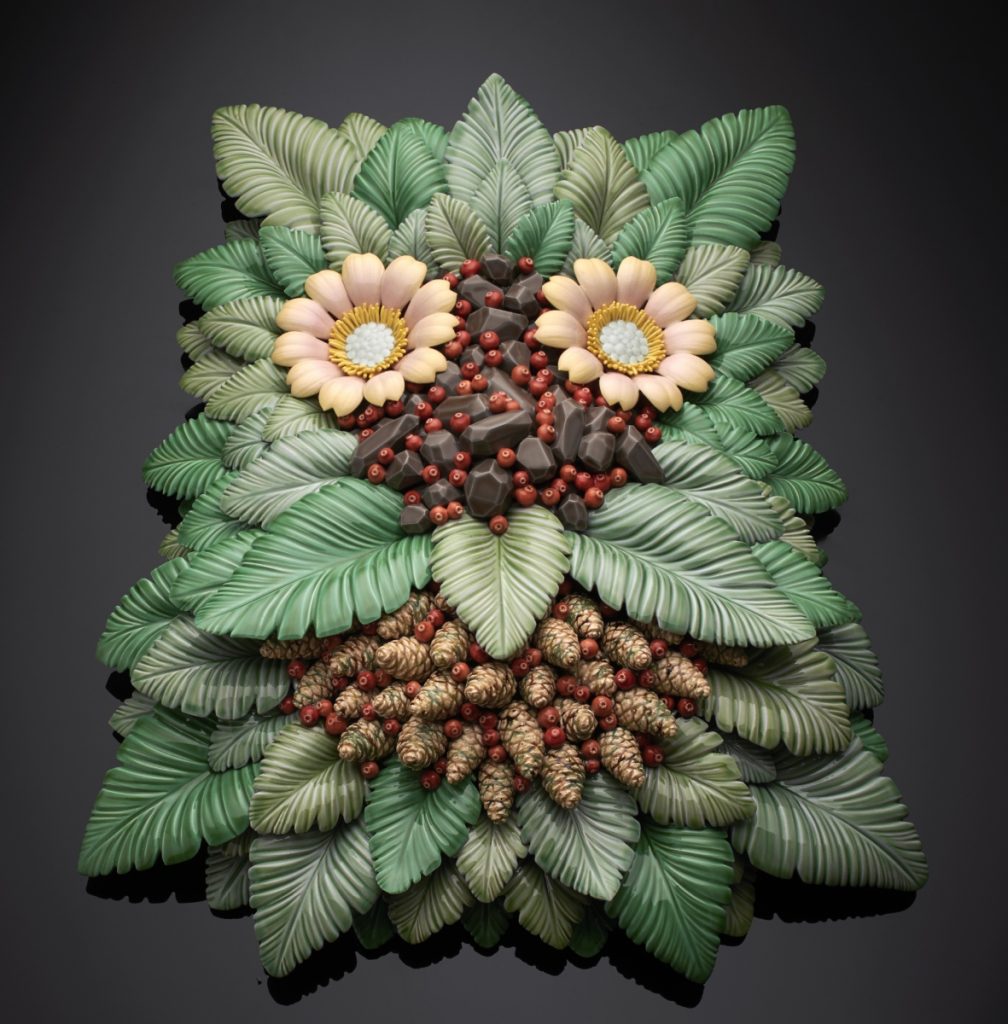
Malene Hartmann Rasmussen, The Forrest, 2020-2021, Stoneware, Mink: 34 x 10 x 6 cm 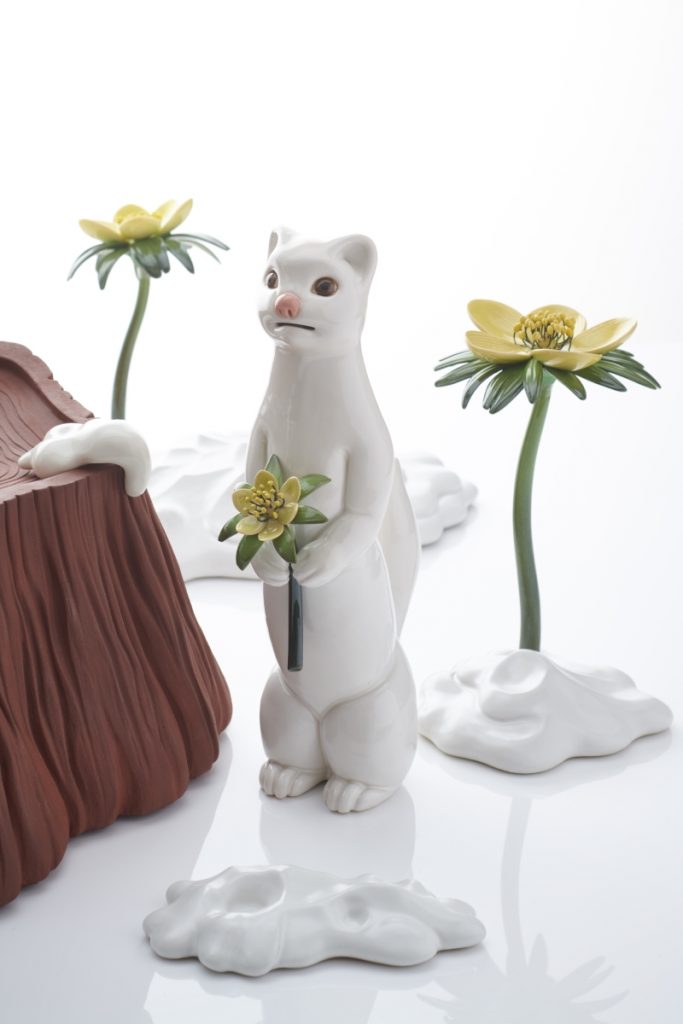
Malene Hartmann Rasmussen, Troll #8, 2014-2018, Earthenware, 51 x 42 x 11 cm 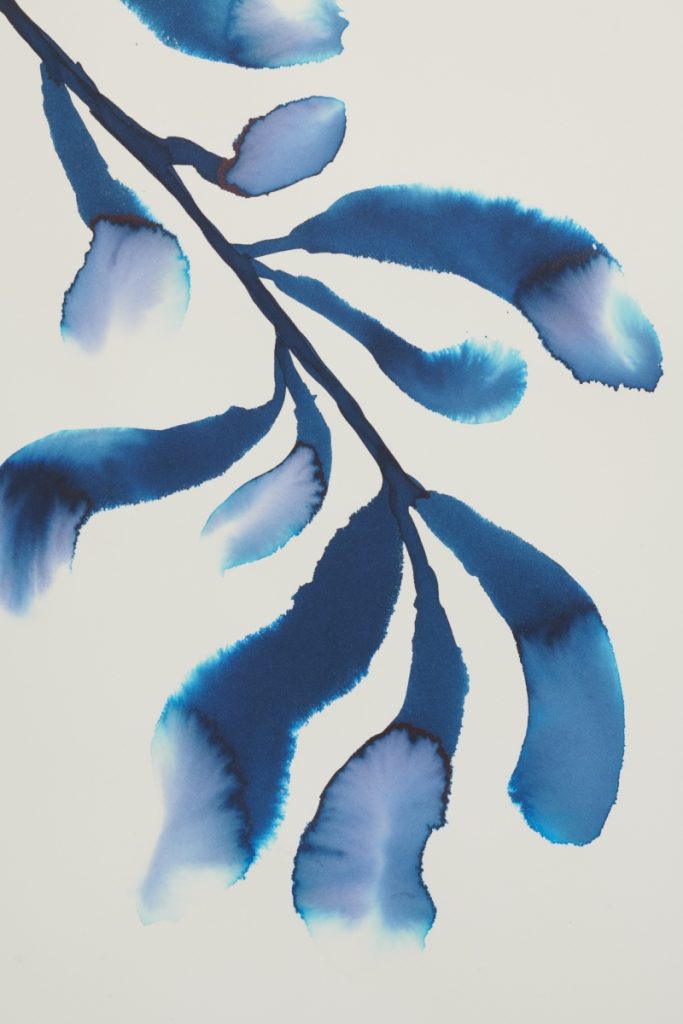
Manuel Canu, Alga, 2020-2021, Watercolour, 40 x 30 cm 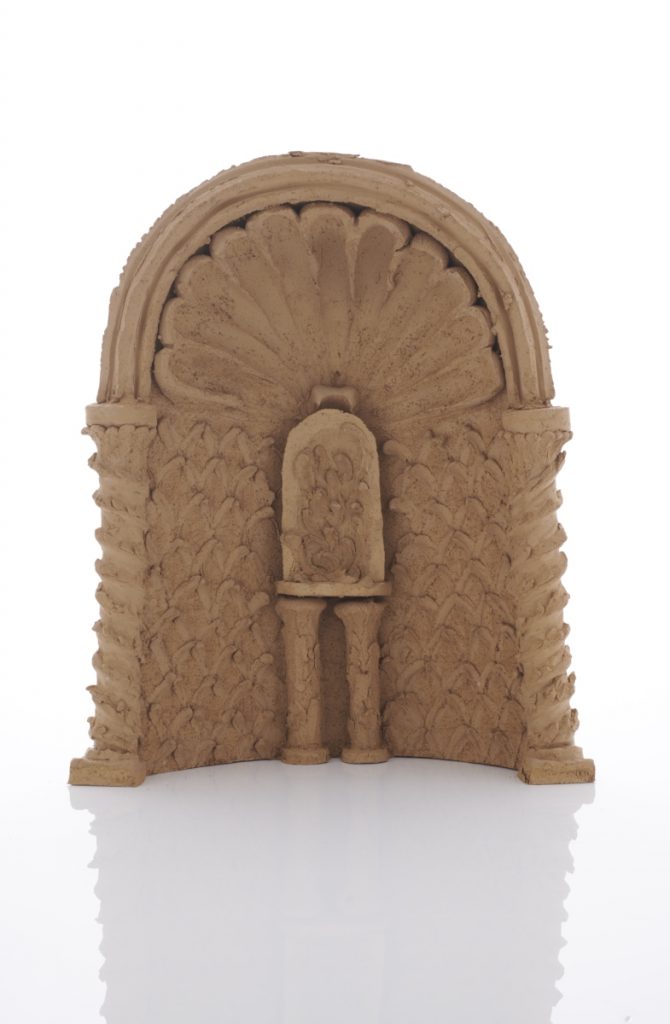
Manuel Canu, Alga, Sketch for installation, 2021, Raw red clay 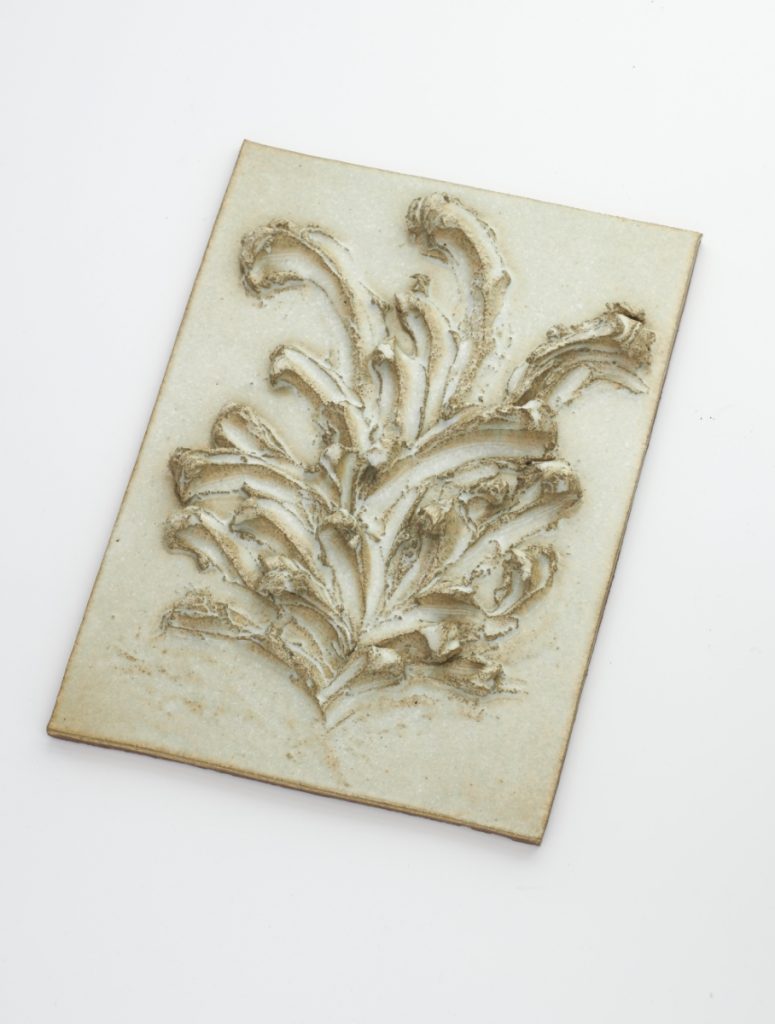
Manuel Canu, Alga, ceramic relief, 2021, Glazed stoneware, 125 x 85 cm 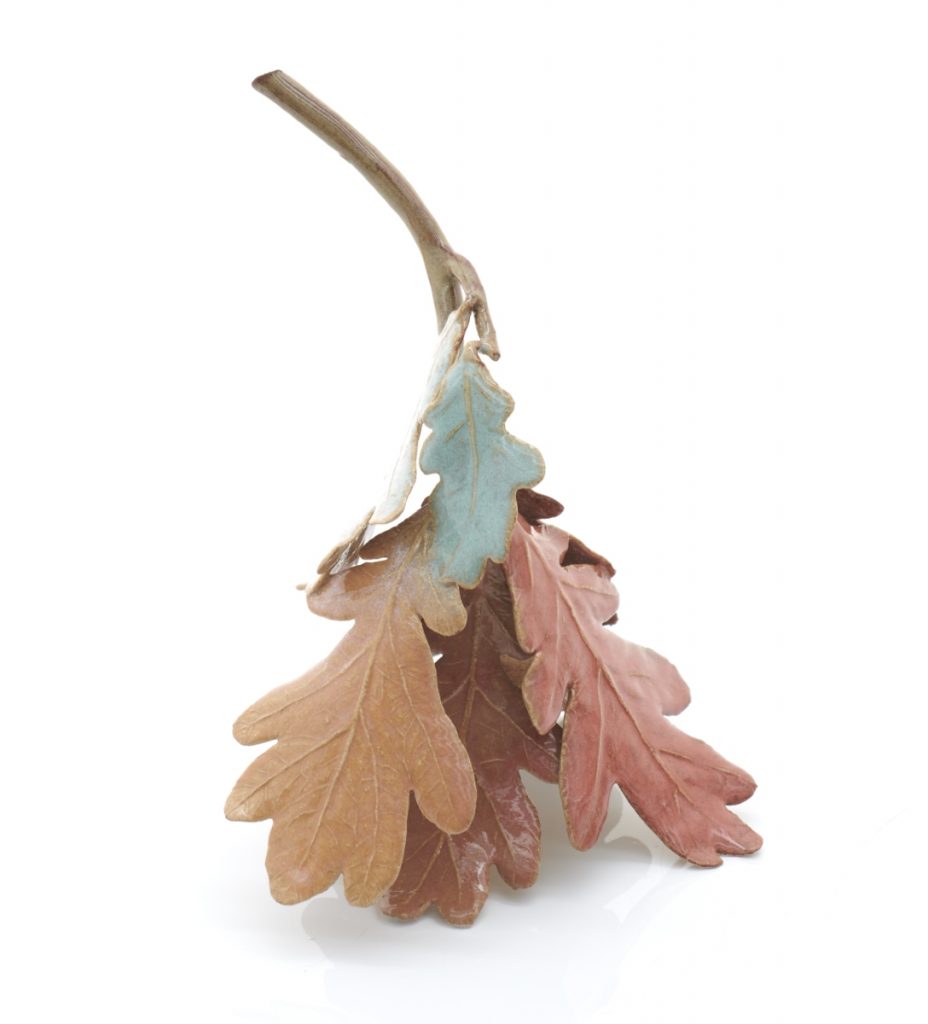
Marianne Nielsen, Oak twig, 2021, Stoneware, 23 x 18 cm 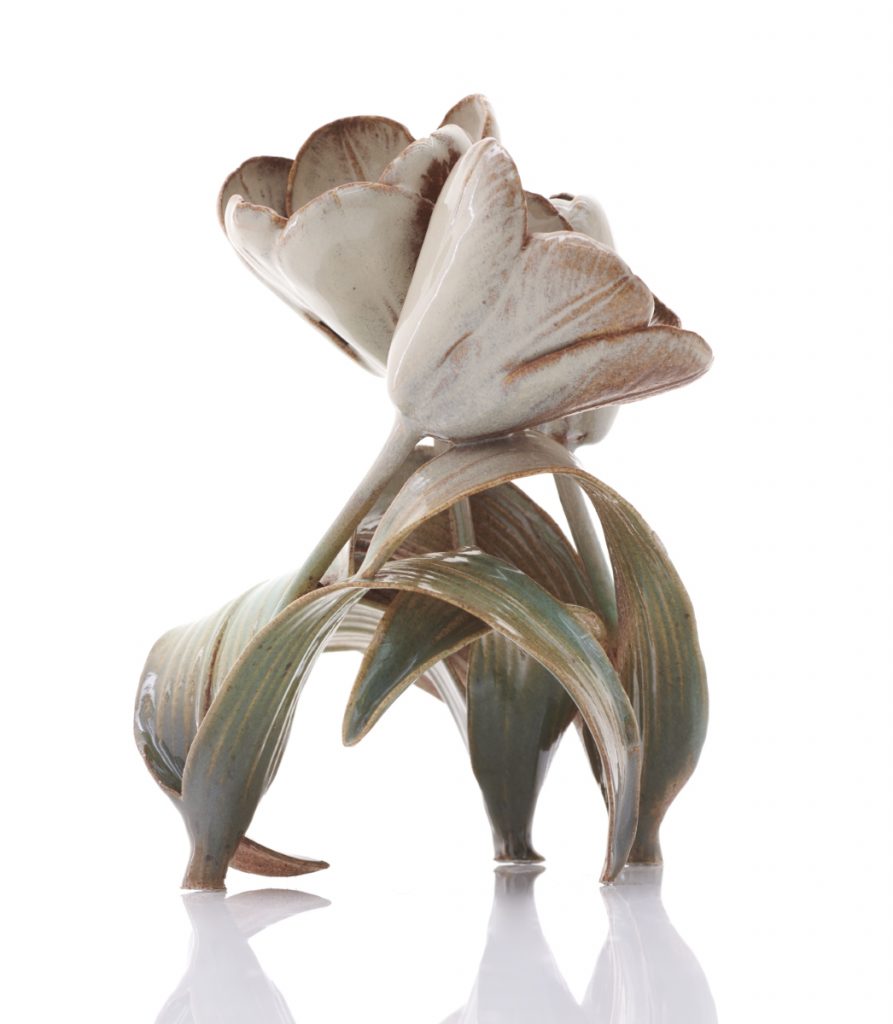
Marianne Nielsen, Tulip, 2021, Stoneware, 23,5 x 17 cm
Nature. Traces & Reflections is on view at the CLAY Museum of Ceramic Art, Denmark
September 26, 2021 – March 13, 2022
The idea of using nature as a source of inspiration is as old as art itself – but very present among numerous contemporary artists. How do they approach the topic – and how does their work reflect our present understanding of nature? That’s the question to be explored in the exhibition Nature. Traces & Reflections at the CLAY Museum of Ceramic Art Denmark.
Here, three prominent ceramicists: Malene Hartmann Rasmussen, Manuel Canu and Marianne Nielsen, follow very different artistic strategies in order tointerpret and revive the topic, while entering into a dialogue with themuseum’s collection of works from the Danish design movement around 1900, called Skønvirke.
Masters of porcelain
In this collection, two ceramic artists in particular stand out: Fanny Garde (1855-1928) and Effie Hegermann-Lindencrone (1860-1945). Both of them were fascinated by the world of plants and no less than 122 different species are noted in their joint workshop books.
Especially Effie Hegermann-Lindencrone demonstrate exceptional skills creating impressive works with delicately modelled and carved details combined with complicated glazing colours.
The magic of clay
The London based ceramist Malene Hartmann Rasmussen (b. 1973 in DK) lives and works in London. She is Inspired by folklore and myths and brings the mysteries of the forest and the sea to life in her art. As in Alice in Wonderland fantasy and daydreams walk hand in hand in absurd and surrealistic scenarios. In this parallel world, which recalls the memories and magic of childhood, nature is animated, and everything appears alive.
In her tableaux Malene Hartmann Rasmussen incorporates naturalistic details which connects her with the art of Fanny Garde and Effie Hegermann-Lindencrone. She has scrutinized their ways of depicting mushrooms, flowers and bladder wrack transforming them into her own expression. With beautiful colours, shiny glazes and an idiom inspired by fairy tales herworks entice the spectator just like the gingerbread house in Hansel andGretel. But appearances are deceptive.
Flowers without a vase
Marianne Nielsen (b. 1971 in DK) lives and works in Copenhagen. She transforms buttercups, poppies, and oak wigs into beautiful, fragile ceramic pieces. With a scientific thoroughness she is immersing herself in detailed studies of plants, fine modelling, and well-adjusted choice of colours. In that way, she has much in common with the masters of porcelain of the Danish design movement. But the perception of ceramics as an artistic medium has changed. More than a century ago ceramics was mainly considered as a minor artform, primarily covering a functional need like a vase. Today, Marianne Nielsen might use the bouquet as the starting point and examine how the flowers may bedefined when the vase is not there. The rules of the game have changed.
Meditative ceramics
The works in drawing, ceramics, and raw clay by Manuel Canu (b. 1979 in Italy) has a strong appeal to the senses and offers an almost meditative calmness. From the dense tactility and bluish black of the drawings to the light and shiny surfaces of the ceramic reliefs they describe the process of examining and interpreting the motif, the rhythm and movement of the swaying seaweed also found in the sketches and porcelain works of Effie Hegermann-Lindencrone.
The centerpiece of the exhibition is a large altar – constructed on site in raw clay – placed under flowing daylight which enhances its shapes and protrusions. The altar will change as the clay dries, cracks, and crackles. Thus, the works make us aware of being a part of something beyond ourselves – both culturally and in relation to our basic nature as the perishable beings we are.
The exhibition was beautifully designed by architect Tine Midtgaard.
Contact
info@claymuseum.dk
CLAY Museum of Ceramic Art
Kongebrovej 42 5500
Middelfart
Denmark
Photos by Sylvain Deleu


